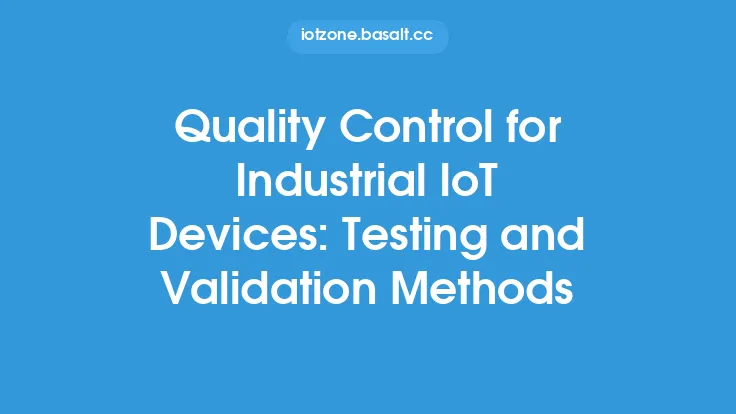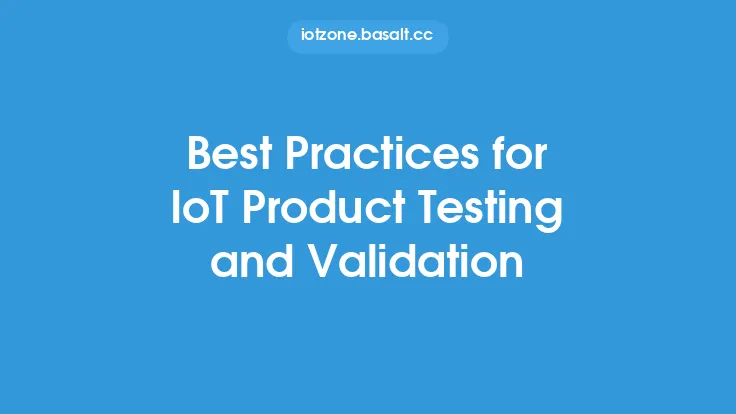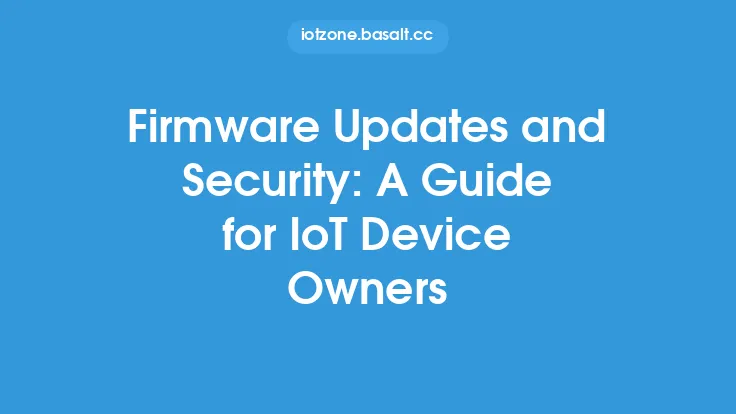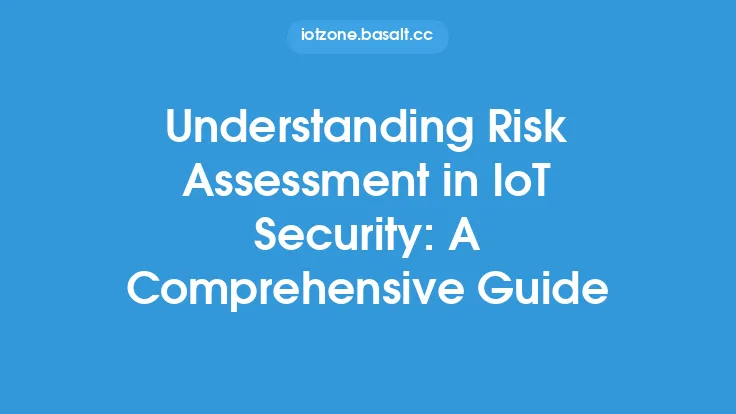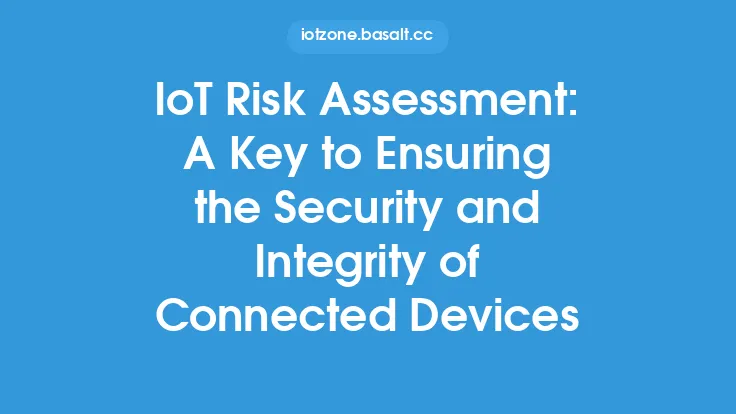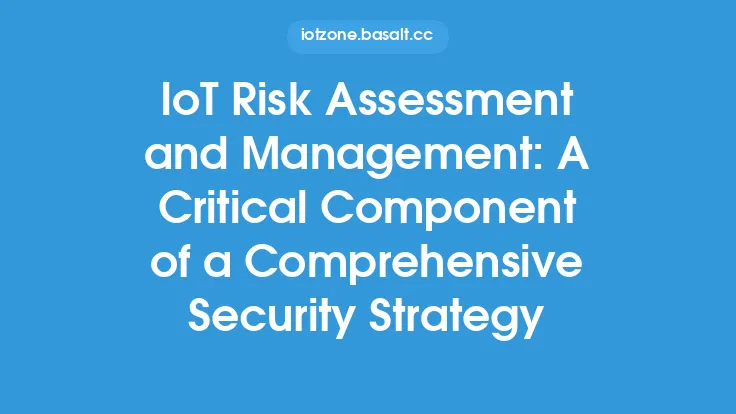The increasing number of IoT devices has led to a growing concern about their security. As these devices become more pervasive and interconnected, the potential attack surface expands, making them a prime target for malicious actors. To mitigate these risks, it is essential to implement a comprehensive approach to IoT device security testing and validation. This involves a thorough evaluation of the device's security features, vulnerabilities, and potential weaknesses to ensure that they meet the required security standards.
Introduction to IoT Device Security Testing
IoT device security testing is a critical process that involves identifying and addressing potential security vulnerabilities in IoT devices. This process typically begins with a risk assessment, which helps to identify the potential threats and vulnerabilities associated with the device. The risk assessment is followed by a series of tests, including penetration testing, vulnerability scanning, and security audits, to identify and exploit potential weaknesses. The goal of these tests is to simulate real-world attacks and evaluate the device's ability to withstand them.
Types of IoT Device Security Testing
There are several types of IoT device security testing, including:
- Black box testing: This type of testing involves evaluating the device's security without prior knowledge of its internal workings. The tester attempts to exploit potential vulnerabilities using publicly available information and tools.
- White box testing: This type of testing involves evaluating the device's security with prior knowledge of its internal workings. The tester uses this knowledge to identify and exploit potential vulnerabilities.
- Gray box testing: This type of testing involves evaluating the device's security with some knowledge of its internal workings. The tester uses this knowledge to identify potential vulnerabilities and then attempts to exploit them.
- Firmware testing: This type of testing involves evaluating the device's firmware for potential vulnerabilities and weaknesses. The tester uses specialized tools and techniques to analyze the firmware and identify potential issues.
- Network testing: This type of testing involves evaluating the device's network communications for potential vulnerabilities and weaknesses. The tester uses specialized tools and techniques to analyze the network traffic and identify potential issues.
IoT Device Security Validation
IoT device security validation is the process of verifying that the device meets the required security standards and regulations. This involves evaluating the device's security features, such as encryption, authentication, and access control, to ensure that they are implemented correctly and effectively. The validation process typically involves a series of tests and evaluations, including:
- Compliance testing: This type of testing involves evaluating the device's compliance with relevant security standards and regulations, such as GDPR, HIPAA, and PCI-DSS.
- Interoperability testing: This type of testing involves evaluating the device's ability to interact with other devices and systems securely.
- Performance testing: This type of testing involves evaluating the device's performance under various conditions, including stress and load testing.
- Penetration testing: This type of testing involves simulating real-world attacks to evaluate the device's ability to withstand them.
Tools and Techniques for IoT Device Security Testing and Validation
There are several tools and techniques available for IoT device security testing and validation, including:
- Penetration testing frameworks: These frameworks provide a structured approach to penetration testing and include tools such as Metasploit and Burp Suite.
- Vulnerability scanners: These scanners use automated tools to identify potential vulnerabilities in the device, such as OpenVAS and Nessus.
- Firmware analysis tools: These tools provide a detailed analysis of the device's firmware, including tools such as IDA Pro and OllyDbg.
- Network analysis tools: These tools provide a detailed analysis of the device's network communications, including tools such as Wireshark and Tcpdump.
- Compliance testing tools: These tools provide a structured approach to compliance testing and include tools such as Compliance Checker and Security Compliance Manager.
Best Practices for IoT Device Security Testing and Validation
To ensure the effectiveness of IoT device security testing and validation, it is essential to follow best practices, including:
- Conduct regular security testing and validation: Regular testing and validation help to identify and address potential security vulnerabilities before they can be exploited.
- Use a combination of testing techniques: Using a combination of testing techniques, such as black box, white box, and gray box testing, helps to ensure that all potential vulnerabilities are identified.
- Use specialized tools and techniques: Using specialized tools and techniques, such as firmware analysis and network analysis, helps to ensure that all potential vulnerabilities are identified.
- Involve multiple stakeholders: Involving multiple stakeholders, including developers, testers, and security experts, helps to ensure that all potential vulnerabilities are identified and addressed.
- Continuously monitor and update: Continuously monitoring and updating the device's security features and firmware helps to ensure that potential vulnerabilities are addressed before they can be exploited.
Challenges and Limitations of IoT Device Security Testing and Validation
Despite the importance of IoT device security testing and validation, there are several challenges and limitations, including:
- Complexity of IoT devices: The complexity of IoT devices, including their hardware, software, and firmware, makes it challenging to identify and address all potential security vulnerabilities.
- Limited resources: The limited resources, including time, budget, and expertise, make it challenging to conduct comprehensive security testing and validation.
- Evolving threat landscape: The evolving threat landscape, including new and emerging threats, makes it challenging to stay ahead of potential security vulnerabilities.
- Regulatory requirements: The regulatory requirements, including compliance with relevant security standards and regulations, make it challenging to ensure that the device meets all required security standards.
- Balancing security and functionality: Balancing security and functionality, including ensuring that security features do not compromise the device's functionality, makes it challenging to ensure that the device is both secure and functional.
Future of IoT Device Security Testing and Validation
The future of IoT device security testing and validation is likely to involve the use of artificial intelligence and machine learning to identify and address potential security vulnerabilities. The use of automation and orchestration tools will also become more prevalent, allowing for more efficient and effective testing and validation. Additionally, the use of cloud-based testing and validation platforms will become more common, providing a scalable and flexible solution for IoT device security testing and validation. Furthermore, the development of new testing and validation methodologies, such as DevSecOps and continuous testing, will help to ensure that IoT devices are secure and compliant with relevant security standards and regulations.
